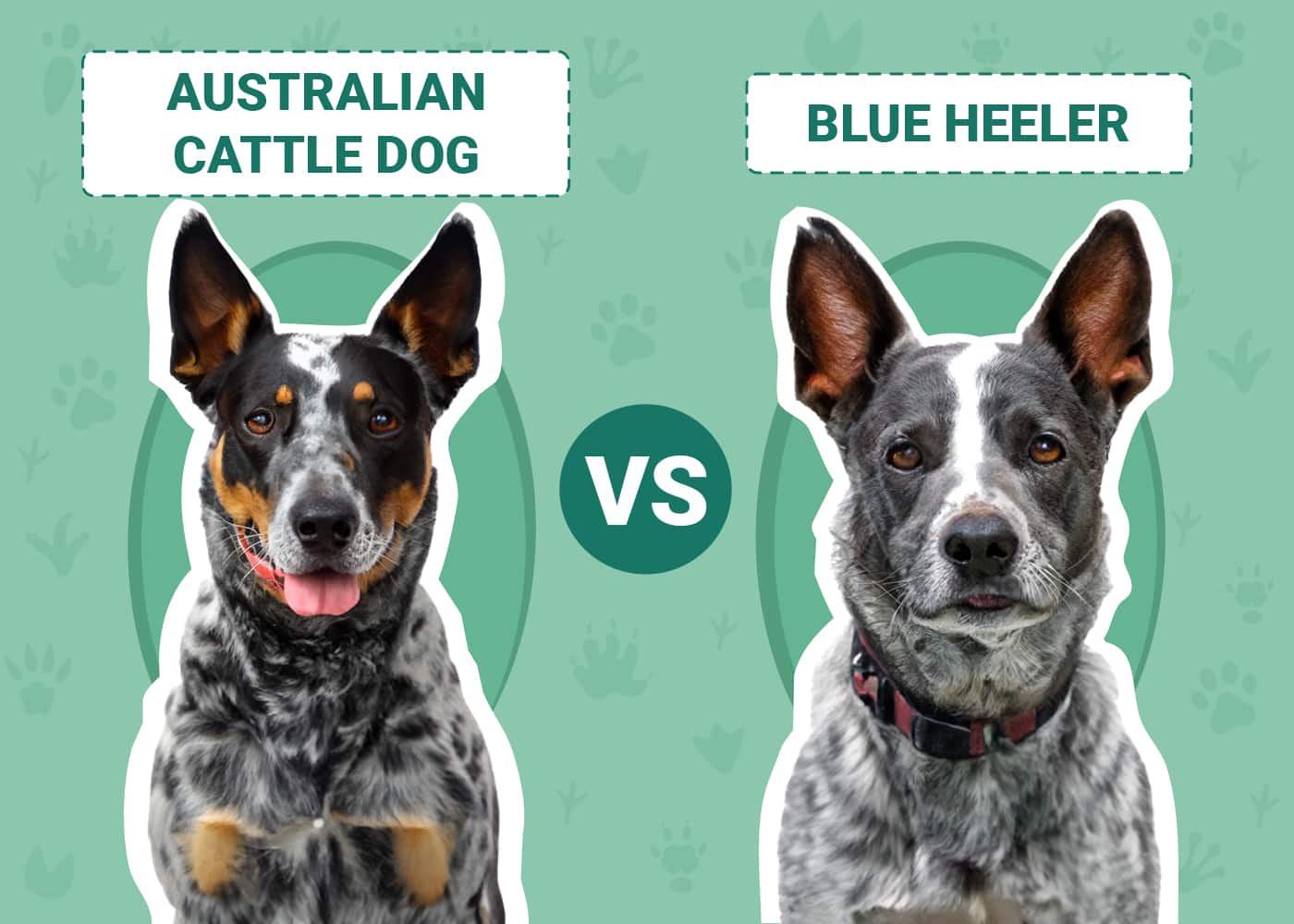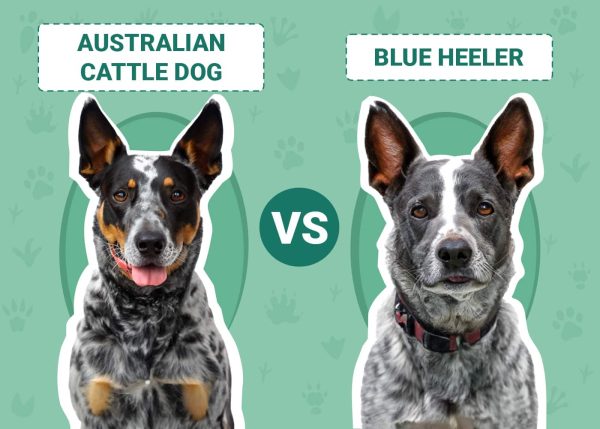Click to Skip Ahead
The Australian Cattle dog and the Blue Heeler are two similar-looking dogs, and many people ask us what the differences are between them. Most people are shocked to find out they are both the same breed, and the blue Heeler is only a color variation of the Australian Cattle Dog. If you are thinking about getting one of these dogs for your home but would like to see if there are any more differences between them, keep reading while we discuss training, grooming, health, and more to help you make an informed purchase.
Visual Differences
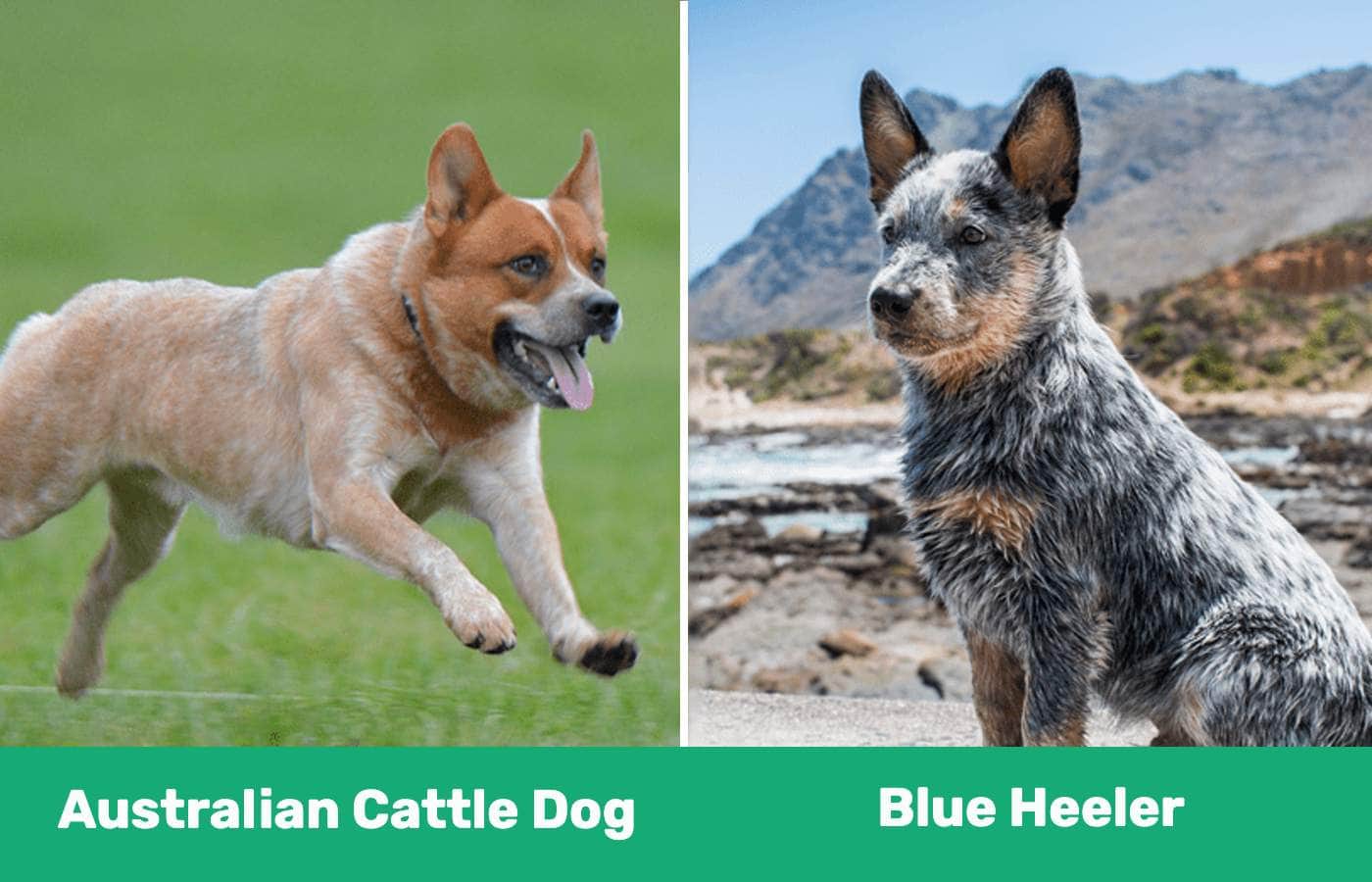
At a Glance
- Average length (adult): 43 – 50 inches
- Average weight (adult): 28 – 36 pounds
- Lifespan: 12 – 14 years
- Exercise: 45 minutes a day
- Grooming needs: Moderate
- Family-friendly: Yes
- Other pet-friendly: Sometimes
- Trainability: Intelligent, able to learn complex tasks
- Average length (adult): 43 – 51 inches
- Average weight (adult): 28 – 49 pounds
- Lifespan: 12 – 14 years
- Exercise: 45 minutes a day
- Grooming needs: Moderate
- Family-friendly: Yes
- Other pet-friendly: Sometimes
- Trainability: Able to learn complex tasks
Australian Cattle Dog Overview
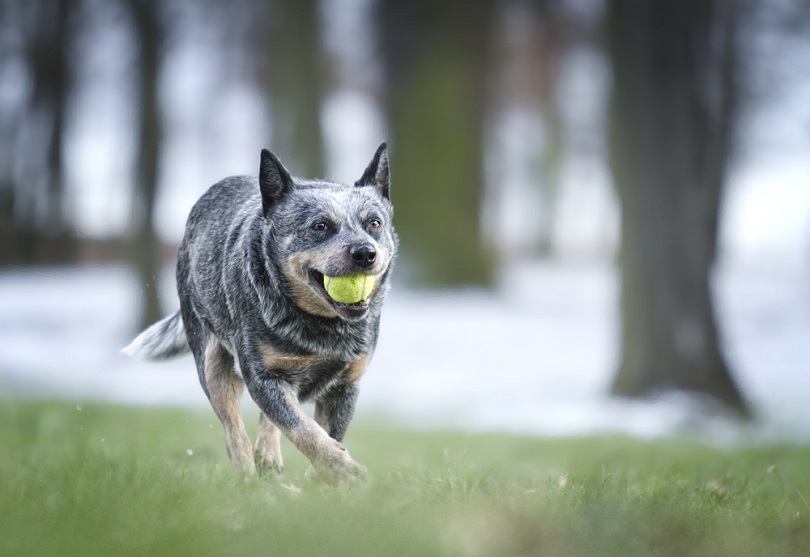
Personality/Character
The Australian Cattle dog is a muscular dog with a strong work drive that was popular with the cowboys of the wild west due to its expert ability to herd sheep. It’s highly intelligent and can also help hunt games and participate in sporting activities. These dogs love being around family members and are more tolerant of children getting rough with them than many other breeds. When not playing with the kids, you will usually find the Australian Cattle Dog sitting at your feet, waiting patiently for attention.
Training
The best way to train your Australian Cattle Dog is to hold short sessions at the same time each day to help get it into a routine where it expects to learn. Make it fun do your dog looks forward to it, and always have a few treats on hand to reward your pet. Holding your sessions immediately after exercise each day can help keep your dog focused on learning instead of chasing after a small animal.
Suitable for:
The Australian Cattle dog is well suited to large families that can help it get the exercise it needs to stay healthy. Children especially have nearly limitless supplies of energy which can help your pet stay active longer and less likely to get into mischief. Its territorial characteristics help it excel at protecting your home from strangers and intruders.
Blue Heeler Overview
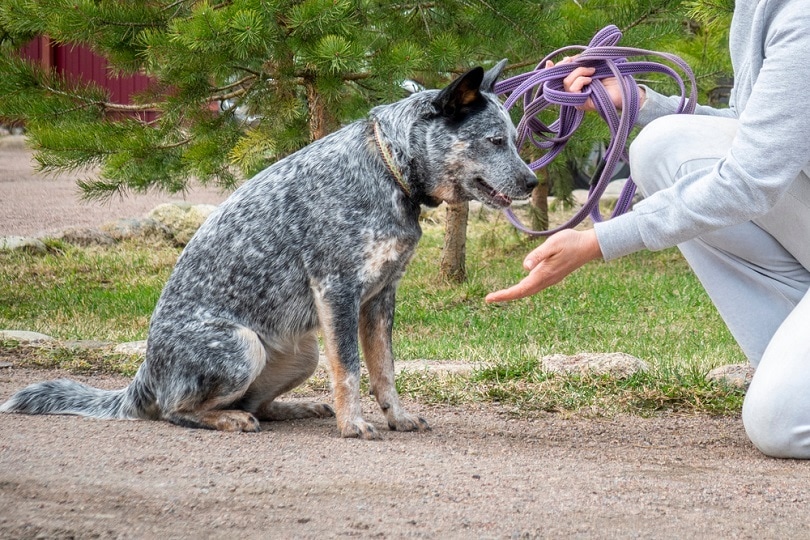
Breeding
A dominant, recessive gene is responsible for the coat color that causes the Australian Cattle dog to acquire the name Blue Heeler, and it isn’t the only variation of the Australian Cattle Dog. Another variation is the Red Heeler and it features a gene that causes it to have a red appearance instead of the blue. All three dogs are extremely similar, with no noticeable difference between them outside their different colors.
Exercise
The Blue Heeler is a versatile herd dog that will require plenty of exercise each day if you don’t live on a farm that can keep it occupied. We recommend setting aside at least 45 minutes each day, no matter how your feeling go help your dog burn off extra energy and calorie to help it maintain an ideal weight. We recommend high-energy activities like swimming and fetch that can help tire your pet out quickly, so you don’t need to spend as long. Other family members can also help your pet get even more exercise.
Suitable for:
Like the Australian Cattle dog, the Blue Heeler is well suited to larger families that can help it stay active and give it a sense of purpose. It likes to follow around each family member to learn their behaviors and habits but will also spend plenty of time underfoot as you go about your daily chores.
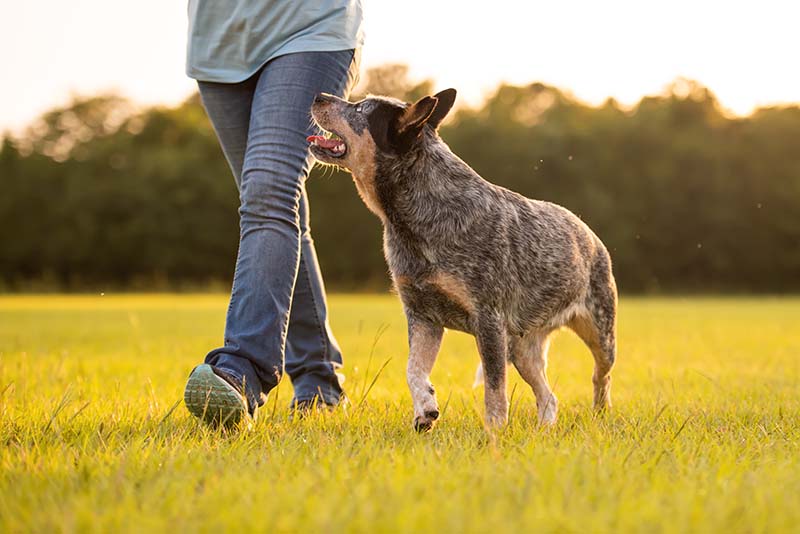
Which Breed is Right for You?
When choosing between the Australian Cattle Dog and the Blue Heeler, you will be glad to learn that they are both the same breed, so the choice becomes much simpler and is only about deciding which color you want. Since the Blue Heeler requires a special gene to create the blue fur, it might be slightly more difficult to create and, therefore, more expensive. In many cases, you might even find that you need to sign up for a long waiting list to get a Blue Heeler if there are not many breeders in your area. Choose the Australian cattle dog when you want a less expensive dog quicker.
We hope you have enjoyed reading over this short guide and found the answers you needed. If we have convinced you to get one of these dogs for your home, please share this guide to the Australian Cattle Dog vs. the Blue Heeler on Facebook and Twitter.
Featured Image Credit: (Top) cynoclub, Shutterstock, (Bottom) Madelein Wolfaardt, Shutterstock

